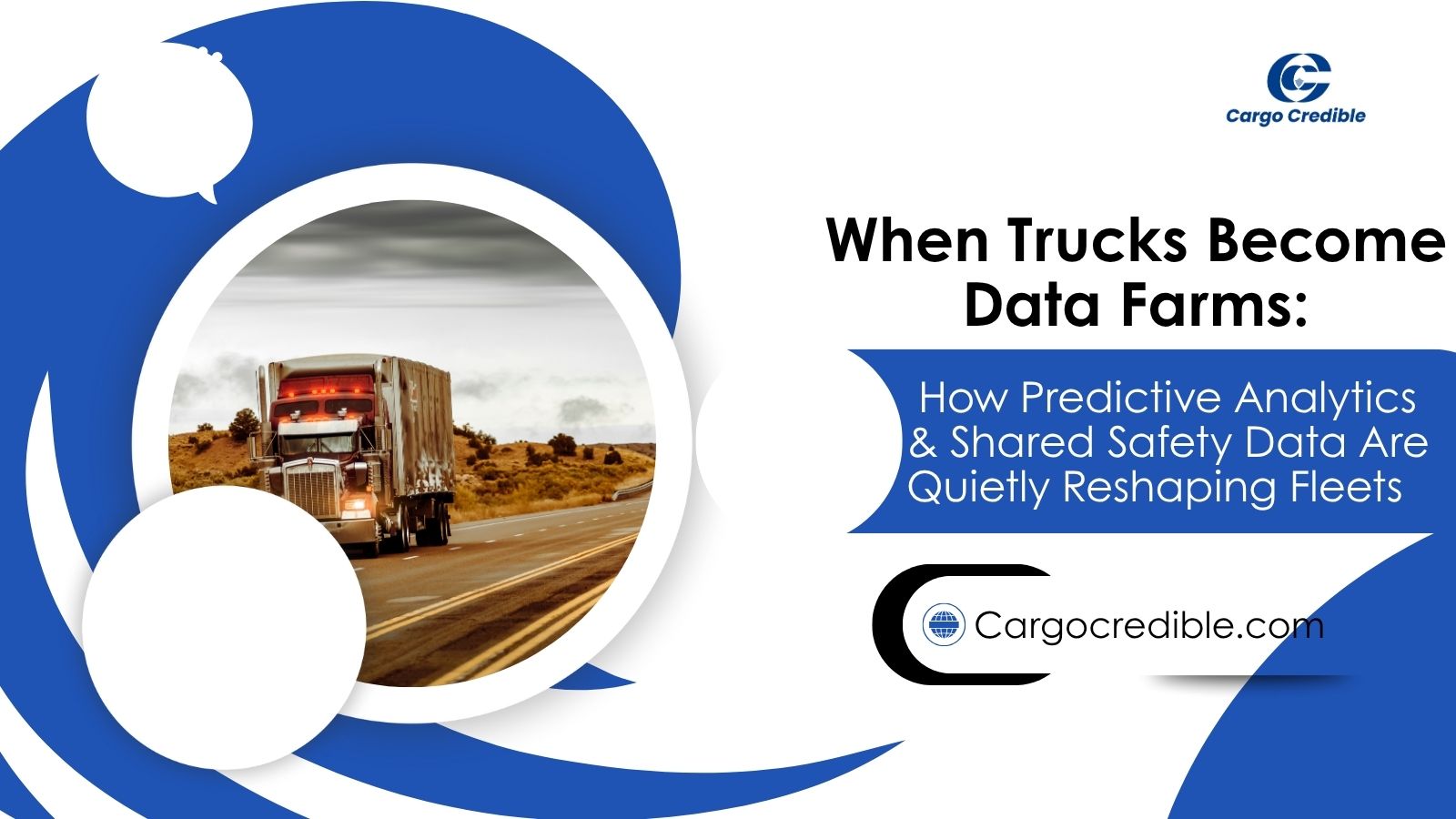When Trucks Become Data Farms: How Predictive Analytics & Shared Safety Data Are Quietly Reshaping Fleets

When people think about trucking technology, their mind often jumps to self-driving 18-wheelers cruising highways without a human behind the wheel. Sure, that sounds futuristic and exciting, but there’s a quieter, less flashy revolution happening right now that’s already transforming the trucking industry—and it doesn’t involve robots. It involves data.
Today’s trucks are becoming rolling data farms, quietly collecting and sharing information that’s changing how fleets operate, how roads stay safer, and how companies save millions of dollars every year.
What’s a “Data Farm”?
Modern trucks are packed with sensors, cameras, GPS, and onboard computers. These tools harvest data constantly: engine performance, fuel use, braking habits, tire pressure, road conditions, even weather. Every mile a truck rolls down the highway, it silently collects billions of tiny, invisible seeds called data points. Like a farmer collecting crops to grow a healthy farm, trucking businesses gather this data to nurture smarter, safer, and more efficient fleets.
From Harvest to Insight: The Journey of Data in Trucking
The data trucks collect doesn’t just sit idle—it’s sent to powerful software systems that analyze it, often in real time. These systems act like super-intelligent brains, able to sift through millions of data points and reveal patterns humans simply can’t see.
Here’s how it works:
- A truck’s engine may be running hotter than usual.
- One side’s brakes might be wearing faster.
- Drivers may frequently slam on their brakes in a specific location.
Alone, these details seem small or random. But together, they tell a compelling story—and this story helps predict problems before they happen. This is called predictive analytics.
How Predictive Analytics Is Changing the Trucking Game
1. Stop Problems Before They Start
Gone are the days when a truck breaks down on the side of a long haul, costing time, money, and risking safety. Predictive analytics lets fleet managers know ahead of time:
"This engine could fail in two weeks — schedule a fix now."
The result? Fewer breakdowns, less downtime, and safer roads.
2. Safer Driving for Everyone
Data also reveals how trucks are being driven: Are drivers speeding? Braking hard? Taking sharp turns? Fleet managers use these insights to coach safer driving habits, reward drivers for good behavior, and catch risky patterns early.
Moreover, many fleets share anonymous safety data with others. If one fleet detects a hazardous curve or slick roadway, others are alerted immediately—a secret safety network that’s growing daily.
3. Smarter Fleets, Lower Costs
Operating trucks is expensive. But data-driven fleets cut costs by:
- Lowering fuel use through optimized routes
- Scheduling maintenance efficiently before repairs get urgent
- Extending vehicle lifespan by catching issues early
- Savings add up to thousands of dollars per truck, and with hundreds of trucks, the impact is massive.
Why Haven't You Heard About This Quiet Revolution?
Because it’s not flashy or cinematic. It’s not a driverless truck starring on the evening news. Instead, it’s behind-the-scenes transformation that’s quietly revolutionizing trucking. Fleets that embrace data-driven technology are delivering goods on time, boosting safety, saving money, and even helping reduce emissions—all without needing a single robot driver.
Real-World Success: Data Farms at Work
Consider a major fleet company that equipped 2,000 trucks with smart sensors. After a year:
- Engine failures dropped by 40%
- Insurance claims fell by 25%
- Fuel efficiency rose by 12%
They didn’t buy new trucks or hire dozens of mechanics. They simply harvested and used the data their trucks already generated.
The Safety Net: Shared Data Protecting Every Driver
Let’s bring this to life with an example: A truck named "Big Betty" is rolling through Kansas when a sudden rainstorm hits. Her sensors detect slippery roads, and her anti-lock brakes engage briefly. Instantly, Betty’s system sends out an anonymous alert: “Slippery road at mile marker 132.”
Twenty miles back, "Speedy Steve" gets a dashboard warning:
“Caution: Reduced traction ahead.”
Steve slows down, stays alert, and safely navigates the hazard—all thanks to data shared invisibly between trucks. This collective awareness forms a quiet, powerful revolution in safety, protecting truckers and everyone on the road.
What’s Next for the Data Farms?
The future will bring even more sensors and faster data sharing. Cities can fix potholes faster with real-time road condition data. Insurance companies could offer smarter, fairer rates based on actual truck driving behavior. Logistics companies will rely on data streams to deliver goods more reliably than ever. Even autonomous trucks will count on these data-driven insights to make smarter, safer decisions.
Look Beyond the Wheels: See the Data Farming Revolution
So next time you see a big rig rumble past, don’t just think “truck.” Think: a moving brain. A data farm. A safety engine. The trucking revolution isn’t a distant sci-fi dream—it’s here right now, quietly reshaping the industry, making roads safer, and driving smarter business.
Comments (0)
- No comments yet.